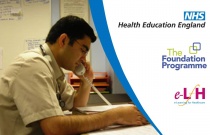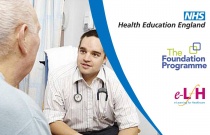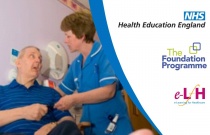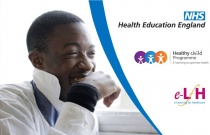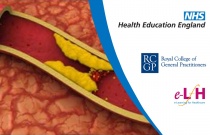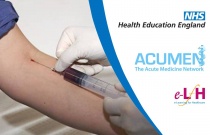How Bronchial Smooth Muscle Cells Make Airways Hyper-Responsive
Dr. Kirk M. Druey (MD), Dr. Michael Grunstein (MD, PhD), and Dr. Stephen Liggett (MD)
1.25 Hours
This course provides an in-depth explanation on how Bronchial Smooth Muscle Cells make airways Hyper-Responsive.
Immunologic Insights into Environmental Triggers of Asthma
Dr. Chris Carlsten (MD MPH), Dr. James E. Gern (MD FAAAAI), and Dr. Gurjit K. Khurana Hershey (MD Ph
1.25 Hours
This session reviews new insights into mechanisms of asthma exacerbations caused by three common environmental exposures.
ED CMS CoPs
Sue Dill Calloway, RN, MSN, JD
The emergency department (ED) is a high-risk environment for liability. In order to prevent problems from arising, administrators must make sure their facilities adhere to CoPs that affect their ED. This program will cover CoPs on ED and Interpretive Guidelines located in two separate sections of the Hospital CoP. Our expert....
MRI Safety: Maneuvering the Maze of ACR, CMS &TJC Standards
Sue Dill Calloway, RN, MSN, JD
MRI is an evolving technology that requires frequent compliance updates to reduce potential risks in the MR environment. This program will cover the CMS hospital CoPs and TJC standards on MRI. It will focus on the American College of Radiology’s MRI guidelines, the National Quality Forum reporting, and TJC’s Sentinel Event Alert....
CMS Medical Records: Hospital CoPs and Proposed Changes
Sue Dill Calloway, RN, MSN, JD
The CMS regulations and interpretive guidelines for medical records have undergone many changes in the past few years. Our expert will provide a crosswalk to those changes and highlight hot topics in the section, including verbal orders, history and physicals, standing orders, and discharge planning standards. This program will....
Holistic Counseling Seminar 1: Introduction to Holistic Counseling
Jim Morningstar PhD.
1.25 Hours
The theory and practice of holistic counseling is presented and distinguished from general counseling practices. Topics for the training course are outlined. Holism as a worldview evolving from systems thinking is detailed along with three basic tenants. Exercises to examine one’s own holistic principles and to clarify one’s pur....
Elderly Nutrition for CNAs (SCORM)
Ms Olympia Resol:RN, MPH, CRNI, CARN
4.00 Hours
Are you working with elderly patients? How is their nutritional status? Are they eating adequately? This content provides a comprehensive course on the nutritional needs of elderly. Topics include the science of food nutrients, nutritional status assessment, risks and prevention of malnutrition.
Effective Referrals to Other Clinical Teams
Cressida Amiel and Bronwen Williams
0.50 Hours
This session will cover what to think about before referring to other clinical teams and how to make effective referrals.
Nutritional Assessment
Annabel Alder and Ruth Kander and and Mary Hickson
0.50 Hours
This session identifies how to assess the nutritional status of a patient and when to get help from the dietitian team.
Keeping the Patient at the Centre of Care
Rishabh Prasad and Arushee Prasad
0.50 Hours
This session explores the relationship between doctors and their patients, and investigates how different theoretical paradigms may be applied to understand interaction within a consultation. The session will also explore how ethical constructs are key to patient-centred care.
Introduction To Youth Friendly Services
Neil Davidson
0.50 Hours
This session introduces the basic elements of young people friendly services. The policy context and evidence for specific young people focused services is explored. The importance of young people´s views is acknowledged as a focus for service improvement.
Examination of A 60-Year-Old Man With Intermittent Claudication
Penny Lockwood
0.50 Hours
This session uses a video clip to demonstrate how to carry out a focused, problem-based physical examination on a patient presenting with acute intermittent claudication in primary care.
Management of Thyrotoxicosis Including Thyroid Storm
Andrew Solomon
0.50 Hours
This session covers typical clinical features and management of both thyrotoxicosis and thyroid storm.
Knee Injuries – Extra-articular 1
Thomas V. Gocke, MS, ATC, PA-C, DFAAPA
0.75 Hours
This video-based activity focuses on clinical presentation and treatment options for quad muscle strains, quad/patellar tendon injuries, Osgood-Schlatter’s disease, Illiotibial Band syndrome and patella tendonitis.
Introduction to Radiology Modalities
Dr Drew McMenamin MBBS FRANZCR
This course covers basic imaging physics, image formation, advantages and disadvantages of image acquisition and basic imaging techniques of X-ray, CT, Ultrasound and MRI modalities.
Additional Tests
Bryony Strachan
This session describes the value and role of additional intrapartum tests including fetal blood sampling, fetal ECG and fetal stimulation testing.
Hypoxic Ischaemic Encephalopathy (Asphyxia)
Michele Upton
0.50 Hours
This session shares links to a range of resources which, when implemented locally, could make a contribution to reducing brain injury during or after birth.
First Hour Care of the Term Newborn Infant
Kate Graham-Evans, Stephanie Michaelides, Belinda Ackerman and Sue Macdonald
1.00 Hours
This session will discuss what happens to a newborn baby at birth and how interruption to the normal process of adaptation can cause problems for a newborn baby born at full term. It emphasises the importance of early recognition of risk to the baby and early actions to prevent further compromise, which may result in separation....
Fertility Awareness Methods
Jane Knight and Celia Pyper
0.50 Hours
This session looks at the scientific basis of different fertility awareness methods (FAM) which can be used for the purpose of preventing and/or spacing pregnancies.
Management of Bleeding
Aruna Hodgson
0.50 Hours
Some end of life care situations are considered as emergencies, requiring urgent intervention. This session provides a framework for managing bleeding when immediate treatment may be aimed at prolonging life, or - if death is inevitable - at ensuring that any distress and fear experienced by the dying patient is alleviated. This....
Infection Control: New York State Mandatory Training
Janett A. Pike, RN, BS, CIC, Jean Marie Cannon, RN, BSN, CIC
4.00 Hours
Today's healthcare environment provides quality treatment and care to patients in a variety of settings. Despite the advances in technology and science, the healthcare environment also contains threats from infectious agents. There are an estimated two million healthcare associated infections (HAIs) that occur each year; one in....
Balamuthia mandrillaris
Andrew McNulty, PhD
This activity will review Balamuthia Infection looking into how the disease is diagnosed, the biology and epidemiology of the infection and diagnosis and treatment providing a clear description on all key factors to the subject. In addition this activity will review the techniques to prevent and control Balamuthia Mandrillaris.....
CMS Hospital CoP Made Easy Part II
Sue Dill Calloway, RN, MSN, JD
Part II of the series will cover patient rights in a hospital, including restraint and seclusion, grievances, informed consent, advance directives, visitation, and much more.
CMS Hospital CoP Made Easy Part IV
Sue Dill Calloway, RN, MSN, JD
Part IV of the series will cover QAPI, utilization review, physical environment, radiology, lab, dietary, and more!
CMS Medical Records: Hospital CoPs and Proposed Changes
Sue Dill Calloway, RN, MSN, JD
The Joint Commission has changed many of their standards to comply with the CMS CoPs. During this program, attendees will receive in-depth information about the CMS regulations and interpretive guidelines for medical records. Additionally, our expert will provide a crosswalk to those changes. Attendees will learn about many d....




